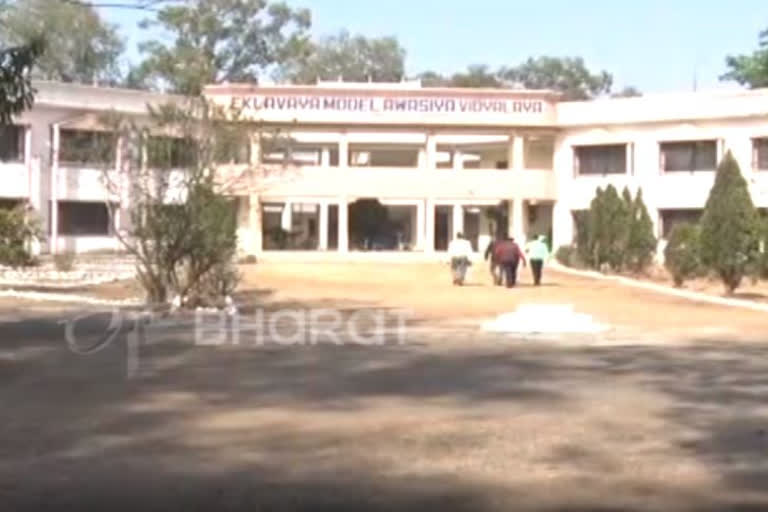Ranchi (Jharkhand): Though it was expected that with the birth of Jharkhand, the fate of the tribal community would change for the better, regretfully the situation has not changed much. But now, it is hoped that 'Eklavya' will change the fate of the tribals of Jharkhand.
In the epic Mahabharata, we had heard that Eklavya sacrificed his thumb to his teacher Dronacharya as Guru Dakshina. Now, it can be said that the central government is playing the role of Dronacharya who has taken the initiative to educate poor tribal children, without even taking dakshina.
As many as 92 Eklavya Model Residential schools will soon be started in Jharkhand, with 480 students in every school obtaining quality education.
In the budget, the Central Government had announced the opening of 69 Eklavya Model Residential schools in Jharkhand. Currently, 7 schools are operational and 16 are under construction.
To assess the on-ground situation, ETV Bharat reached the Eklavya Model Residential School at Salgadih in Tamar, 65 kilometres away from Ranchi.
'Eklavya' gave confidence to students
Listening to the words of Dilip Besra of Chandil, who studies in class 12 (science stream), it seemed that no one can stop Jharkhand from moving forward. Dileep comes from a poor family where getting three meals a day was difficult. However, Eklavya Residential School became a turning point in his life. He got admitted in the school in class 8 and since then, there has been no looking back.
Dileep scored more than 94 per cent marks in the 10th board examination and wants to become a civil services or defence officer.
Also read: Village school teacher honoured with Padmashri award
The team of ETV Bharat reached the school without any prior notice. However, what the team witnessed was reassuring. Due to the COVID-19 pandemic, children from class six to nine, who are not able to attend physical classes, are now being taught online. Gauri Kumari, the teacher of the school, said that the online system was implemented with the onset of the pandemic.
Other parents also getting inspired
Sikandar Tudu of Dhalbhumgarh has been studying in the school from class six, and wants to become an employee in the IT sector. He said because of this school, he has found a path to move towards his goal. Other parents are also sending their children to Eklavya School after being inspired to leave the village for studies.
The principal of the school Carvin Waters thanked the government for opening 69 Eklavya schools in Jharkhand. He said that with this system of education, tribal children will be able to join the mainstream.
Tribal Welfare Commissioner Harsh Mangla informed that five central government agencies will build schools which will be run by the state government directly under its control. The land has also been acquired for 69 schools. According to the guidelines of the Ministry of Tribal Affairs of the Central Government, agencies will be selected to run all Eklavya schools in Jharkhand.
7 schools are currently operating in Jharkhand-
- Eklavya Model Residential School, Salgadih, Tamar, Ranchi
- Eklavya Model Residential School, Kathijoria, Dumka
- Eklavya Model Residential School, Torsinduri, Chaibasa
- Eklavya Model Residential School, Basia, Gumla
- Eklavya Model Residential School, Kunjra, Lohardaga
- Eklavya Model Residential School, Bhognadih, Barhet, Sahibganj
- Eklavya Model Residential School, Sundarpahadi
Rs 5.23 crore spent on each school
A total of 480 tribal children will be able to study in each school from class six to 12. The special thing is that Rs 1.09 lakh will be spent on a student every year. The central government will provide all the money. A school will have a total of 52 staff, including academic and non-academic. That is, 4,784 people will get jobs after all the Eklavya Model Residential schools are operational. If a school has 480 students, then it will cost Rs 5.23 lakhs per year for its operation.
Tribal literacy rate 17% lower than national average
According to the 2011 census, Jharkhand has a literacy rate of 67.43 per cent, which is about 7 per cent less than the national average. In this ratio, the literacy rate of tribal society is just 57.1 per cent.



